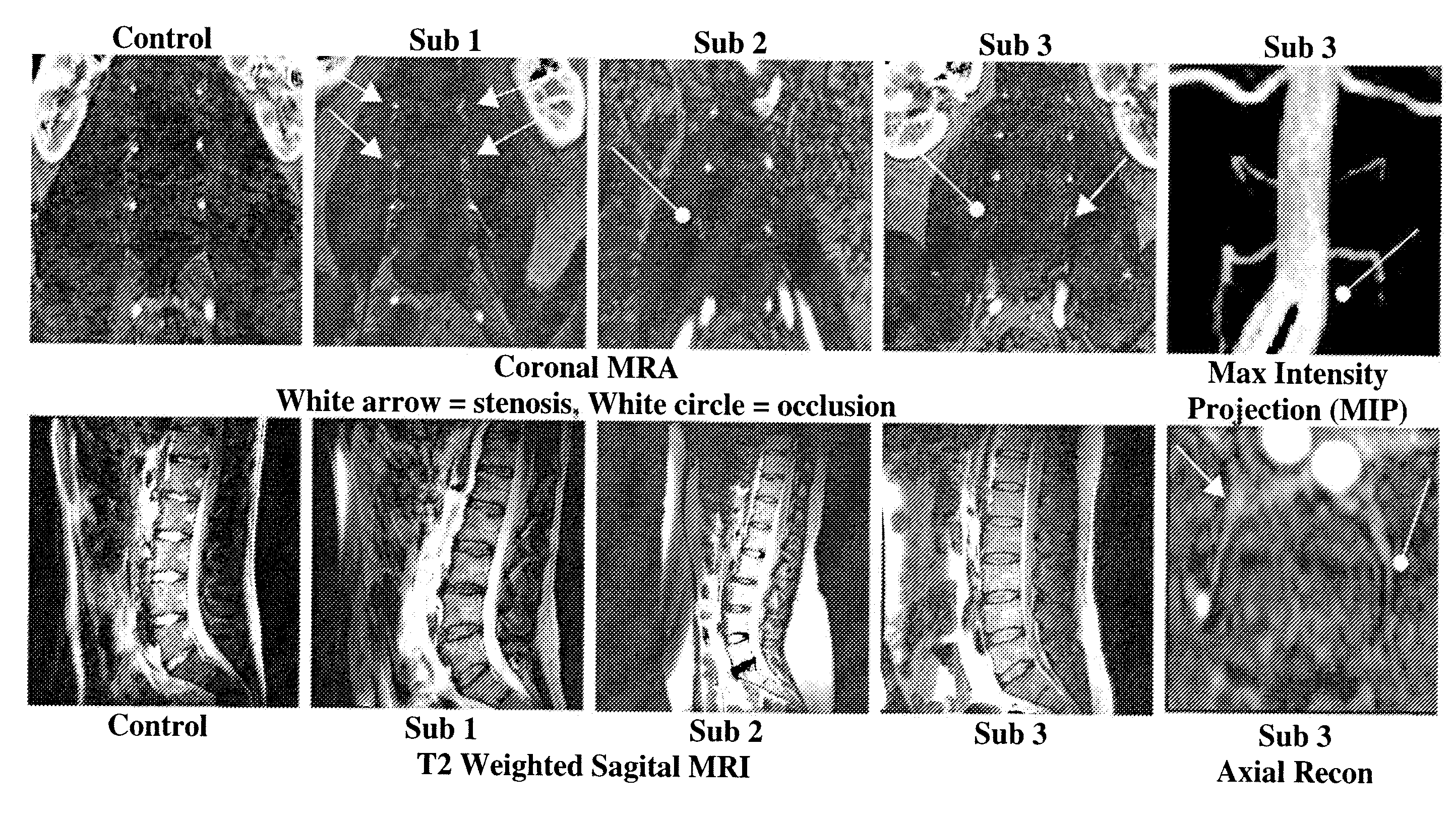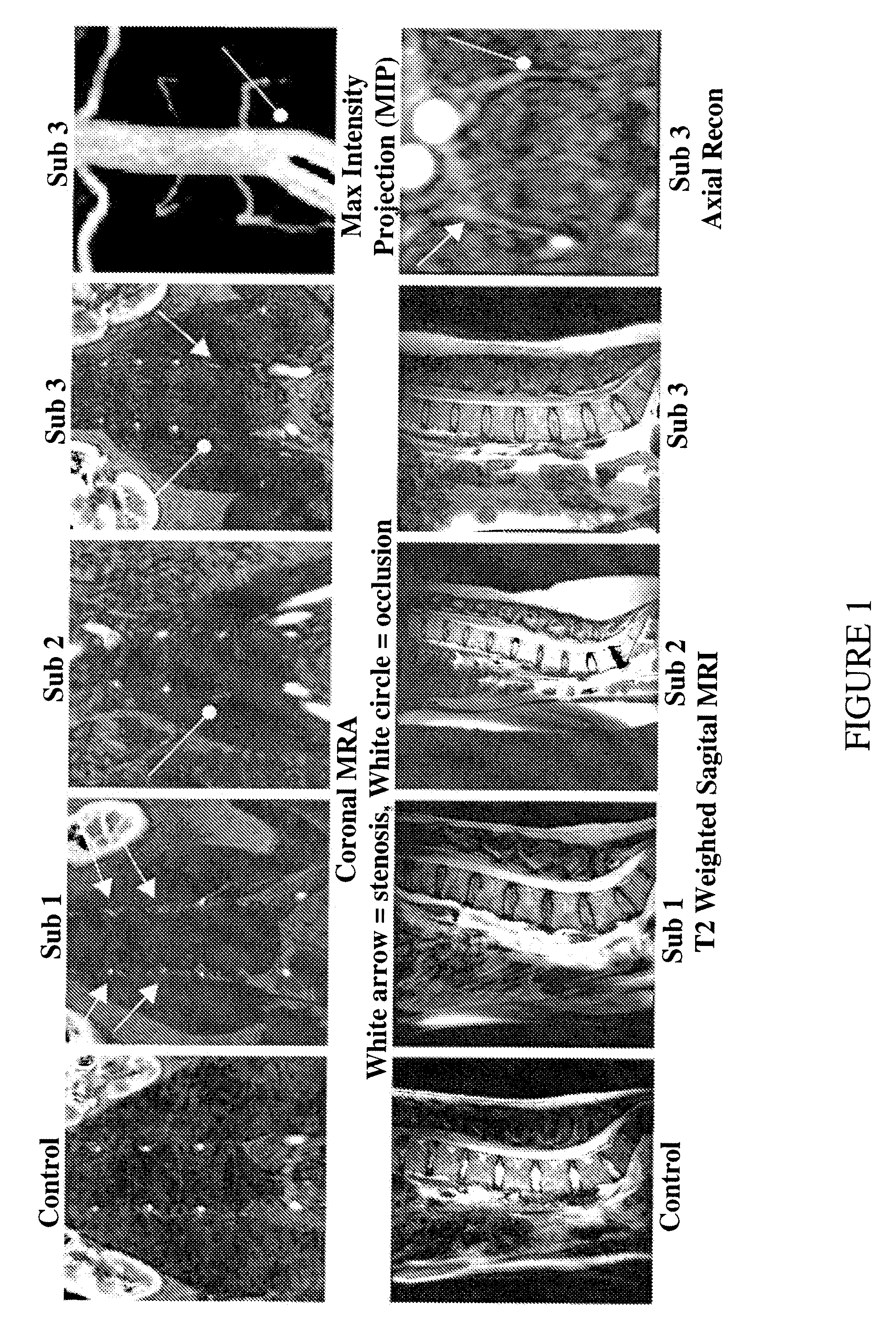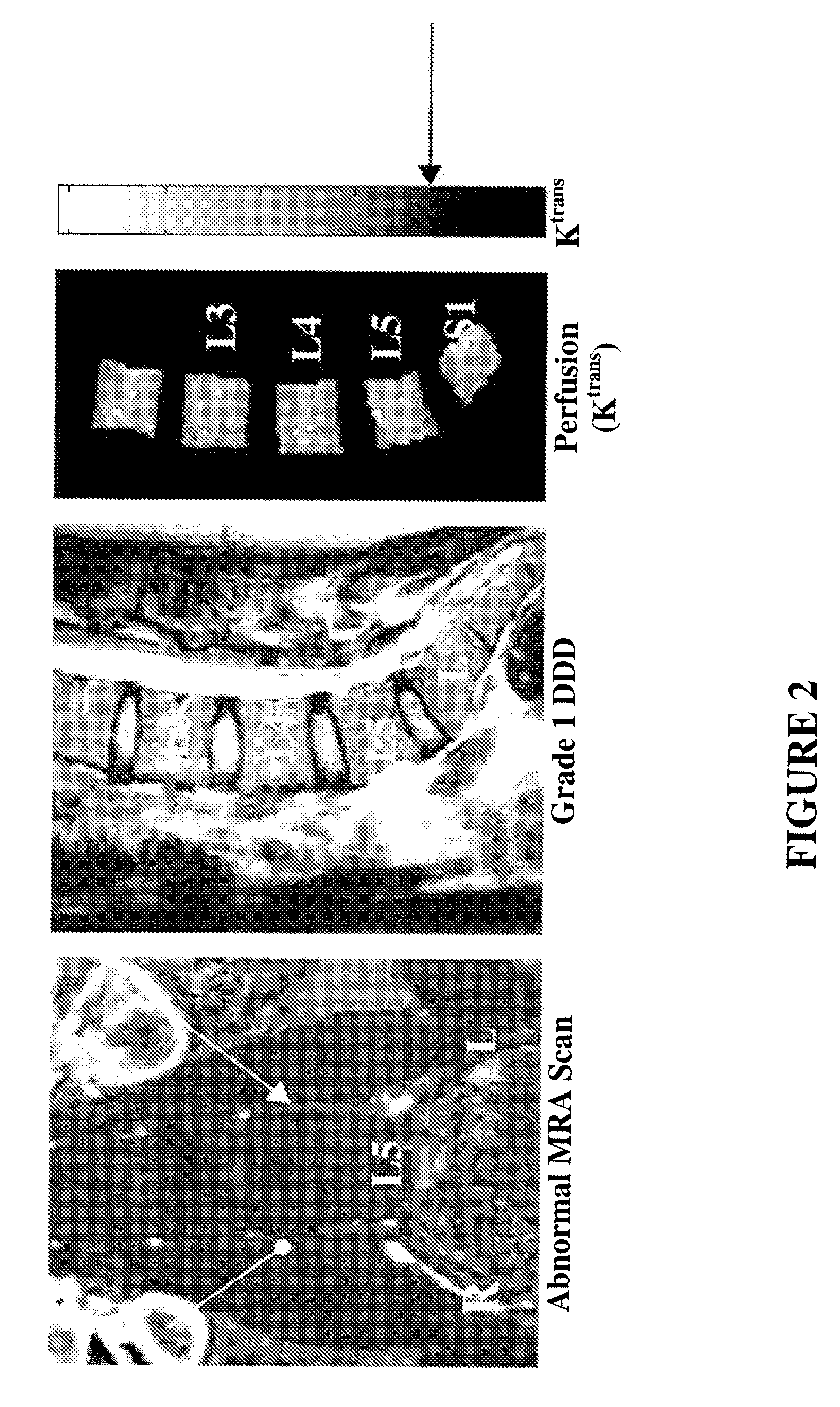Therapeutic angiogenesis for treatment of the spine
a technology of angiogenesis and spine, applied in the field of low back pain, can solve the problems of disc death, significant economic loss, and enlargement of psychosocial and economic ramifications, and achieve the effect of increasing perfusion
- Summary
- Abstract
- Description
- Claims
- Application Information
AI Technical Summary
Benefits of technology
Problems solved by technology
Method used
Image
Examples
example 1
Lumbar Segmental Artery Analysis Combined with Vertebral Body Dynamic Perfusion
[0097]The vertebral arterial tree and vertebral body blood flow were simultaneously evaluated for the purpose of vascular mapping of the lumbar spine. The goal of this study was (1) to develop a safe and reproducible technique of MRA and perfusion utilizing one injection of contrast, (2) to measure vertebral perfusion and compare intra-subject and inter-subject results with the degree of segmental artery stenosis and degenerative disc disease, and (3) to begin evaluating normal controls.
[0098]Both the lumbar MRA and dynamic perfusion portions were contrast enhanced. Subjects were volunteers with degenerative disc disease (DDD) and low back pain and were referred from spine surgeon practices or by word of mouth. The images were acquired with a Philips Achieva 3T system. For all imaging protocols, we used 330 mm*300 mm FOV and a 6-element SENSE torso RF coil. The imaging session started with the perfusion s...
PUM
| Property | Measurement | Unit |
|---|---|---|
| Flow rate | aaaaa | aaaaa |
| Structure | aaaaa | aaaaa |
| Volume | aaaaa | aaaaa |
Abstract
Description
Claims
Application Information
 Login to View More
Login to View More - R&D
- Intellectual Property
- Life Sciences
- Materials
- Tech Scout
- Unparalleled Data Quality
- Higher Quality Content
- 60% Fewer Hallucinations
Browse by: Latest US Patents, China's latest patents, Technical Efficacy Thesaurus, Application Domain, Technology Topic, Popular Technical Reports.
© 2025 PatSnap. All rights reserved.Legal|Privacy policy|Modern Slavery Act Transparency Statement|Sitemap|About US| Contact US: help@patsnap.com



